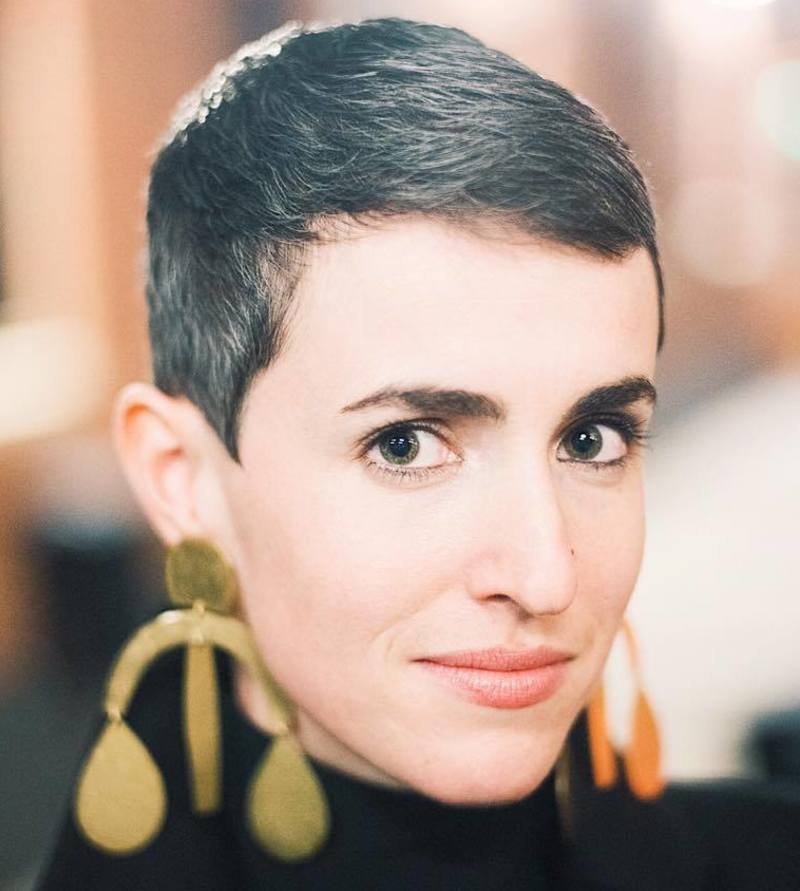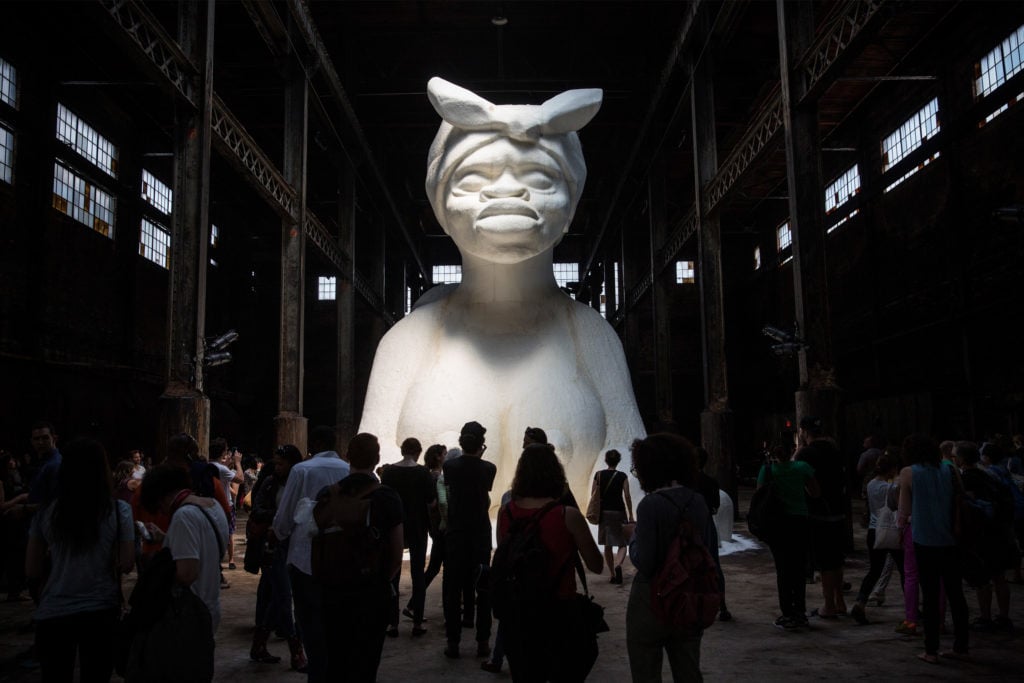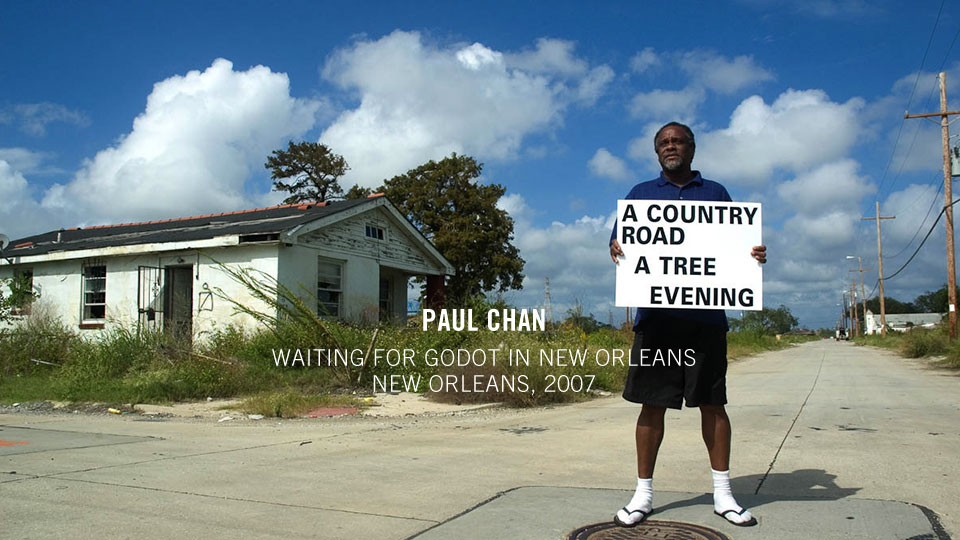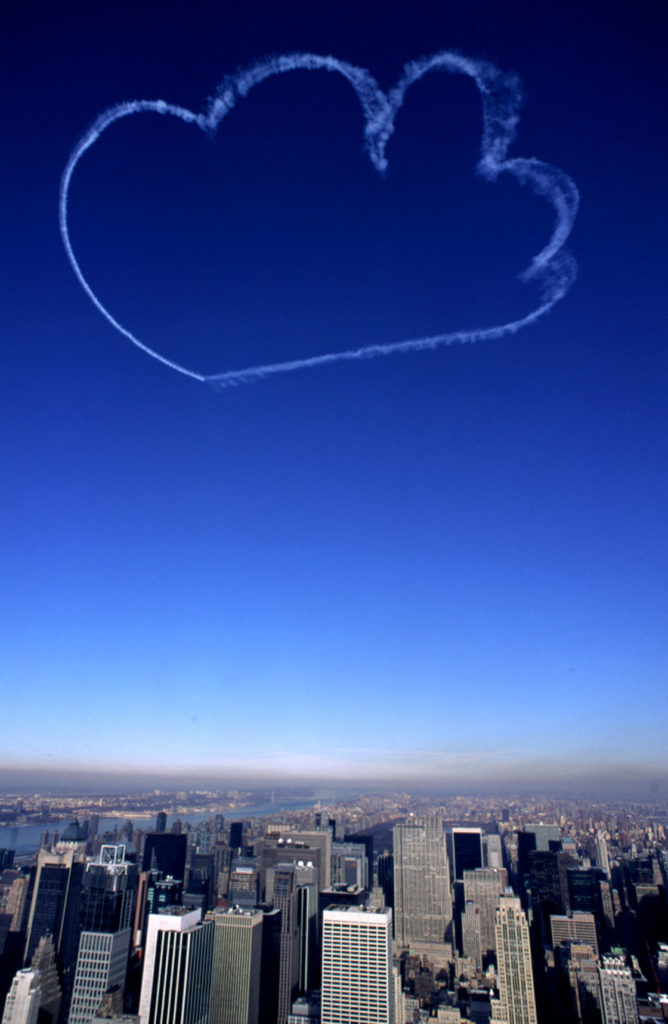People
Justine Ludwig, Creative Time’s New Director, on Public Art, Empathy, and Why It’s Good She’s Not From New York
The new director says you can expect Creative Time to face social and political issues head-on.

The new director says you can expect Creative Time to face social and political issues head-on.

Sarah Cascone

Justine Ludwig, the newly minted executive director of Creative Time, comes to the New York art nonprofit from the Dallas Contemporary. It’s an exciting move for a beloved organization that has seemed in flux in recent years, following the departure of longtime executive director Anne Pasternak in 2015 and artistic director Nato Thompson last fall. In an email interview with artnet News, Ludwig spoke about her leadership vision, her thoughts on the importance of public art, and the first Creative Time project she ever saw.
What role do you feel public art plays in New York?
Public art is an integral part of New York City’s urban landscape. It’s a city that lives and breathes art, and public art is central to that—greatly expanding the art-going audience by enabling greater accessibility. A major issue facing cultural institutions right now is the sense so many people have of not belonging: the feeling that they don’t have access or that these institutions are not tailored to them. Central to public art is the idea that art should be part of the everyday, of everyone’s life. It’s a very different way of presenting art. Everyone has access and everyone belongs, because it’s a part of the urban fabric itself.

People view Kara Walker’s A Subtlety, a 75-foot-long and 35-foot-tall sphinx made in part of bleached sugar at the former Domino Sugar Refinery on May 10, 2014, in Williamsburg. Photo by Andrew Burton/Getty Images.
How do you think Creative Time’s projects are different from other public art initiatives?
Creative Time has always done a particularly fantastic job realizing the most ambitious dreams of artists and reflecting upon pressing socio-political issues in the process. It speaks to the power of art to inspire conversation. They establish a personal stake in art through active viewing, and while the work is often intimately tied to a locality or place, it nonetheless inspires national debate.
Kara Walker’s A Subtlety [2014] presented art on a completely different scale, taking advantage of a particular location in New York and speaking to that location and its history while also delving into important issues around race. Paul Chan’s Waiting for Godot in New Orleans [2007] was a performance piece that not only existed as a happening but also engendered, or placed a spotlight on, a specific geographic location and a catastrophic event [Hurricane Katrina] that had happened there, and brought the issue back to the public consciousness.
And I deeply believe in Creative Time’s commitment to social justice and contemporary art within a public sphere. That’s a big part of why I’ve admired the organization for so many years.

Paul Chan, Waiting for Godot in New Orleans (2007). Photo by Paul Chan, courtesy of Creative Time.
How do you plan to steer Creative Time after the recent leadership changes? What do you see as the important steps for the organization moving forward?
Under my leadership, the organization will not only diversify the sites where projects take place but also invest more in supporting the ambitions of emerging artistic talent. All projects will be tied to pressing social issues, and adopt a holistic approach to what public art is—actively engaging “publics.”
We’re going to emphasize the ability to be responsive and occupy different spaces that are directly tailored to the projects that take place within them. In doing so, we will work to create environments that foster dialogue and bring communities together. Core values will be empathy, generosity, and diplomacy.
I believe that a global mentality is something that we ought to champion within the context of the United States. Bringing in voices from all over the world to create ambitious projects in the communities and locations that best speak to their work.
How will your experiences working as a curator in Cincinnati and Dallas inform your approach to leading an important New York institution? Do you feel that living outside the country’s major arts capitals has provided you with valuable perspective, and if so, how?
Being from Massachusetts, having lived in Ohio, and currently calling Texas home, I have been exposed to the profound diversity of worldviews and social realities present within different regions of the United States. As we contend with the consequences of a deeply divided nation, Creative Time has the opportunity to create productive discursive space. This has been one of the cornerstones of my own curatorial practice to date, and I see it as inherent within Creative Time’s mission.

Vik Muniz, Clouds (2001). Courtesy of Creative Time.
What is the first Creative Time project you remember seeing?
The first I remember seeing was Vik Muniz’s Clouds [2001] project. What I loved about it, like so many of Creative Time’s projects, is how it was manifest in quotidian existence—just something you happened upon as you went about your business, but with the capacity to change not only the rest of your day but the way you view the city or the place where you are. It was a glimpse of the sublime, there in the mundane.